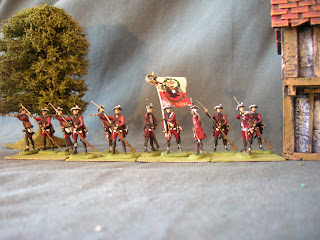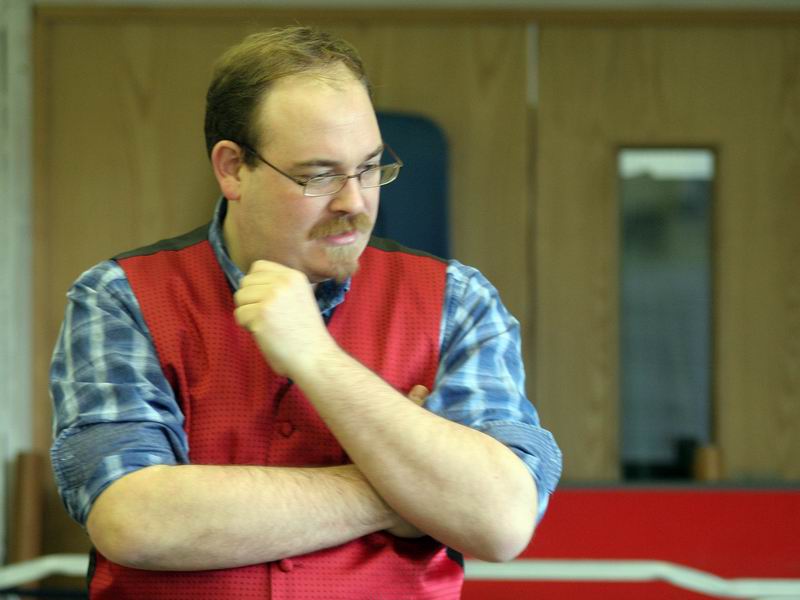When Wiesenstein arrived at Bad-Mergentheim on the 23rd June he was feted by Friedrich and many junior members of the staff as something of a conquering hero. This view was not shared by the more professionally competent members of Friedrich’s command, notably generals von Scheer and Lundquist. The failure of Wiesenstein, in their book, was not to press on to Wertheim and cut Hessenstein’s lines of communication and compel him to withdraw further, and allow the siege at Wurzburg to be raised without any actual fighting. Instead, by moving south, he had made a battle almost certain.
Whilst Scheer and Lundquist shared their misgivings another figure was equally unhappy with the turn of events. General von Hausen was the commander of the army advance guard and the arrival of another cavalry commander, with a victory under his belt, put his nose out of joint. He was also aware that there had been grumblings about his ability to command and the last thing he needed was a potential rival.
For Prinz Friedrich, though, all was clear. His command was unified. Now all he had to do was brush aside the remainder of Hessenstein’s forces and Wurzburg would be relieved. But for four days he rested and recuperated his army, only waddling out of Bad Mergentheim on the 27th. He had only marched a day when scouts brought news of Hessenstein’s position. Riding ahead with a small escort he made a considerable field ride before returning to the area where his army was making camp. Discussions with his senior officers, including some local peasants Lundquist had brought along, soon hammered out a plan of action.
The Left
The left wing was to be commanded by Generalleutnant von Wiesenstein. Friedrich emphasised that, as he would be responsible for capturing the road along the river this sector was critical. His sector would also encompass the small walled farm, and in order to batter this a little he was assigned most of the army’s heavy guns.
Links Kolonne
Generalleutnant von Wiesenstein
Poor
Bold
Brutal
Poor
Bold
Brutal
Kolonne Avantgarde: Obristleutnant Businelli
Efficient
Bold
Ruffian
1er Farinelli Freicorps 748
2er Farinelli Freicorps 711
1er Treffen: Generalfeldwachtmeister Prinz Furstemberg
Poor
Cautious
Disciplined
1/IR19 ‘Graf Hohenlohe’ 576
2/IR19 ‘Graf Hohenlohe’ 684
1/IR8 ‘Erzbischoff von Wurzburg’ 750
2/IR8 ‘Erzbischoff von Wurzburg’ 750
2er Treffen: Obrist Sir Alan Hamilton
Efficient
Bold
Disciplined
1/IR15 ‘Hamilton’ 803
2/IR15 ‘Hamilton’ 806
1/IR26 ‘Augsburg’ Fusiliere 633
Kolonne Artillerie: Major Kirchwarth
1er Stellungs Batterie 4x6lb 2xHowitzer
1er Schwere Stellungs Batterie 4x12lb 2xHowitzer
Bombardier-Corps: Major Feinnes
1er Compagnie 4x18lb, 4x heavy Howitzer
2er Compagnie 4x18lb, 4x heavy Howitzer
The Centre
As Friedrich saw on his field ride the front of Hessenstein’s position was studded with redoubts. To break through these was clearly a job for the Royal Guard and an experienced commander. As such he gave the task to the capable and seasoned Generalleutnant von Lundquist.
Zentrum Kolonne: Generalleutnant von Lundquist
Efficient
Aggressive
Disciplined
Efficient
Aggressive
Disciplined
1er Treffen: Generalfeldwachtmeister Wilhelmini
Poor
Aggressive
Disciplined
1er Garde Grenadiere 824
2er Garde Grenadiere 792
1er Garde Musketiere 819
2er Garde Musketiere 798
2er Treffen: Generalfeldwachtmeister Moritz von Appengau
Poor
Daring
Disciplined
1er Garde Fusiliere 824
2er Garde Fusiliere 824
‘Von Frankenfeldt’ Grenadiere 420
‘Von Reisinger’ Grenadiere 846
Zentrum Kolonne Artillerie: Major Volkmann
Batterie zu Fuss 5x6lb
The Right
The right hand column was to be commanded by the experienced, if shaky, General der Infantrei Graf von und zu Scheer. A close confidant of Konig Johann, von Scheer had been sent by the King to act as a guide to Friedrich. His feelings so far were mixed. Friedrich ordered Scheer to break through the allied left once von Hausen (in command of the cavalry) had cleared the opposing horse out of the way. In conjunction with Prinz Moritz’ Avantgarde he was then to turn the allied left and roll up the line.
Rechts Kolonne: General der Infantrei Graf von und zu Scheer
Efficient
Bold
Disciplined
Efficient
Bold
Disciplined
1er Treffen: Generalfeldwachtmeister Graf von Furstenberg-Heiligenberg
Poor
Aggressive
Brutal
1/IR22 ‘Liebfusiliere’ 685
1/IR23 ‘Deutsche-Ordern’ Fusiliere 833
1/IR25 ‘von Eichstaett’ Fusiliere 773
2er Treffen: Generalfeldwachtmeister Ritter von Urach
Efficient
Aggressive
Disciplined
1/IR16 ‘Hohenzollern-Hechiggen’ 845
2/IR16 ‘Hohenzollern-Hechiggen’ 792
1/IR12 ‘von Baden-Durlach’ 688
2/IR12 ‘von Baden-Durlach’ 714
Rechts Kolonne Artillerie: Major von Rechberg
2er Stellungs Batterie: 4x6lb, 2xHowitzer
2er Schwere Stellungs Batterie 4x12lb, 2xHowitzer
The Cavalry
In order to clear the enemy horse out of the way so it would not impede Scheer’s advance the Graf von Hausen was ordered to use his cavalry superiority to defeat his opponents quickly and allow Scheer to develop his attack.
Incompetent
Bold
Brutal
Bold
Brutal
Household Brigade: Generalfeldwachtmeister Graf Erffa-Wernburg
Efficient
Aggressive
Brutal
KR1 ‘Garde du Corps’ 558
KR2 ‘Garde Karabinier’ 460
1er Kurassiere Brigade: Generalfeldwachtmeister Graf von Helldorf-Bedra
Efficient
Bold
Disciplined
KR8 ‘Erzbischoff von Wurzburg’ 743
KR13 ‘Ritter von Limpurg’ 816
1er Dragoner Brigade: Generalfeldwachtmeister Ritter von Salmannsweiler
Efficient
Aggressive
Disciplined
DR4 ‘Prinz von Onoldsbach’ 577
DR6 ‘Graf von Henneberg-Schieusingen’ 566
Mixed Brigade: Generalfeldwachtmeister von Zahringen
Efficient
Bold
Brutal
KR14 ‘Deutsche-Ordern’ 834
DR12 ‘Konigin Maria’ 857
The Advance Guard
Given the constrained nature of the battlefield it was clear that the majority of the army’s light troops were going to go unused. But Lundquist had suggested a flanking march via a series of pathways through the woods to the right. Friedrich acceded to this idea suggesting it be commanded by his younger brother, Prinz Moritz. For Friedrich it got his younger brother out of his hair, gave him an independent command, and did not risk him taking away any of Friedrich’s glory.
Armee Avantgarde: Generalfeldwachtmeister Prinz Moritz
Efficient
Daring
Disciplined
Efficient
Daring
Disciplined
Kliuchevski Legion: Prince Aleksandr Kliuchevski
Efficient
Aggressive
Brutal
1/Kliuchevski Legion 645
2/Kliuchevski Legion 645
3/Kliuchevski Legion 645
Kliuchevski Legion Hussars 225
Avantgarde Brigade: Obristleutnant von Giessenburg
Efficient
Aggressive
Ruffian
Farinelli Freicorps Cavalry 281
Von Giessenburg Land-und-Feld Jager 669
‘von Bach’ Grenadiere zu Pferde 694
Husaren Brigade: Obrist Fusco di Matalony
Highly Efficient
Bold
Brutal
HR10 ‘Garde Husaren’ 649
HR16 ‘Elkvity’ 554
HR18 ‘von Holk’ 475














































